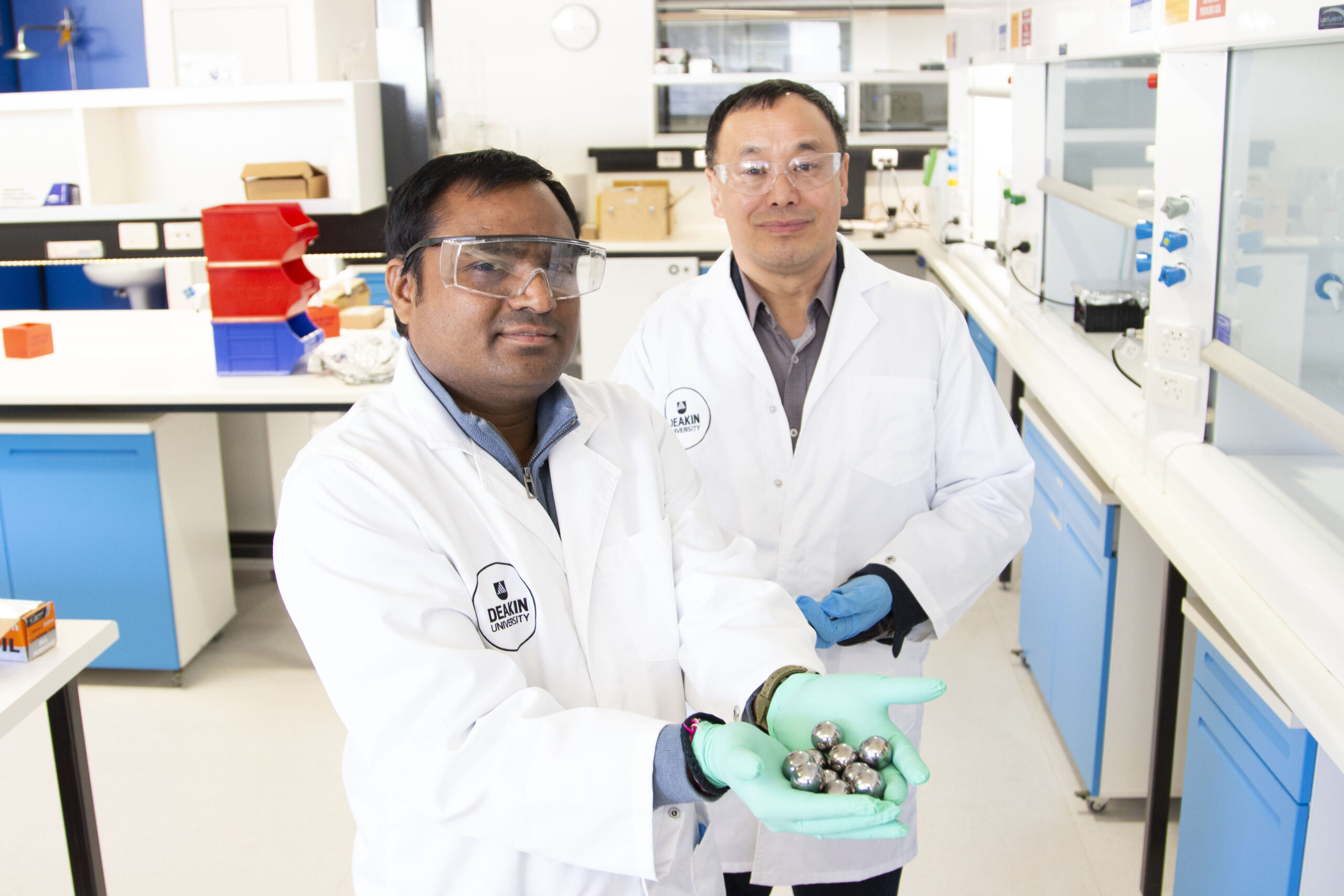Green hydrogen has a lot going for it. It’s a clean fuel that can not only reduce greenhouse gas emissions but create a lucrative new export industry. However, it has some significant challenges that need to be resolved before it can reach its full potential.
PUTTING A CORK IN IT
One major challenge for green hydrogen is storage. If hydrogen were to be stored and transported in the same manner as natural gas, it would need to be cooled down and liquefied. But while natural gas liquefies at -161°C, hydrogen gas liquefies at -253°C. Cooling something down to that temperature requires a lot of energy.
“In general, hydrogen storage is not well understood, not scaled and potentially a very expensive part of the chain,” says Alison Reeve, Deputy Director of the Energy and Climate Change Program at the Grattan Institute.
However, new research from Deakin University may have found a clever solution with ‘ball milling’.

Ball milling uses mechanical energy to drive chemical reactions. The process goes something like this:
- Find/build a tumbler that can rotate.
- Fill tumbler with a dozen stainless steel balls, the gas you wish to store and a harmless chemical called boron nitride.
- Start spinning the tumbler so that the stainless steel balls start moving around and drive a chemical reaction.
And voilà! You have what is known as a ‘mechanomical reaction’.
The reaction makes the gases adsorb to the surface of the boron nitride through chemical bonds. Put simply, ball milling can potentially store hydrogen gas in a solid powder form, removing the need to liquefy it.
“This was an accidental discovery. When the gas bonded to the powder, the pressure inside the tumbler dropped to zero. We checked the tumbler for leaks but found none,” says Dr Srikanth Mateti, lead researcher behind the discovery.
“We repeated the process 30 times and got the same results.”
Srikanth and his colleagues published a research paper on how this technique can separate hydrocarbon gases (olefin and paraffin gas) by selectively adsorbing just one. Most excitingly, ball milling offers vast energy savings.
With current technology, the petrochemical industry separates hydrocarbon gas mixtures by using an energy-intensive cryogenic distillation process. This process accounts for 15% of global energy consumption.
The process is also less energy intensive than hydrogen gas liquefaction. This could potentially solve a major problem in the green hydrogen supply chain.
While Srikanth’s paper is focused on using ball milling to separate olefin and paraffin gas, he and his team are currently working on a paper for storing hydrogen gas. Srikanth’s team also has intellectual property for the technology to store other gases with the ball milling technique.
HOLD YOUR HORSES
The above study from Deakin University is exciting stuff for green energy enthusiasts. Unfortunately, ball milling isn’t the silver bullet to solving our fuel problems.
“It can take a long time for research to move from the lab to industrial scale,” says Alison.
“The most efficient solar panel you can buy at the moment has a level of efficiency that was achieved in the lab in 1985.”
“The most efficient solar panel you can buy at the moment has a level of efficiency that was achieved in the lab in 1985.”
“Australia has the second-biggest pipeline of announced hydrogen projects. There are plenty of 3D renderings and websites, but we have installed practically nothing. If anything, we are in the middle to the back of the pack in terms of production.”
Ouch. But surely we don’t have to wait until the late 2050s to see if ball milling will work on an industrial scale?
According to Alison, this is where the government can step in.
GOVERNMENT SUPPORT
“The government needs to continue to invest in early-stage R&D demos and commercialisation to keep pulling stuff out of the lab and make it more available.”
Early-stage research and development are risky, so most investors are hesitant until things are proven, making it hard to access capital.

However, government support can allow research to be developed until the initial kinks are smoothed out.
Governments can also help industry by creating ‘market pull-through’. After all, you can have the world’s greatest hydrogen storage system, but it will be useless if no one is buying hydrogen.
A good example of government supporting market pull-through is renewable energy.
“The Australian Government has provided a lot of support for renewable energy generation such as solar farms or wind farms. But at the same time, the federal government legislated for energy retailers to buy renewable energy.”
“It’s this demand that underwrites projects at large scale. It’s being able to go to a bank and say ‘I have five customers who will buy it at this price for 5 years’.”
An even more prescient example of a fast lab to market pipeline is vaccines for COVID-19.
“Governments said to pharmaceutical companies ‘get this vaccine ASAP and I will buy 5 million doses’.”
“If the government wants it, they can make it happen.”
So while research such as Srikanth’s is vital for a green hydrogen industry, it can’t happen in a vacuum. It needs government support to flourish.









